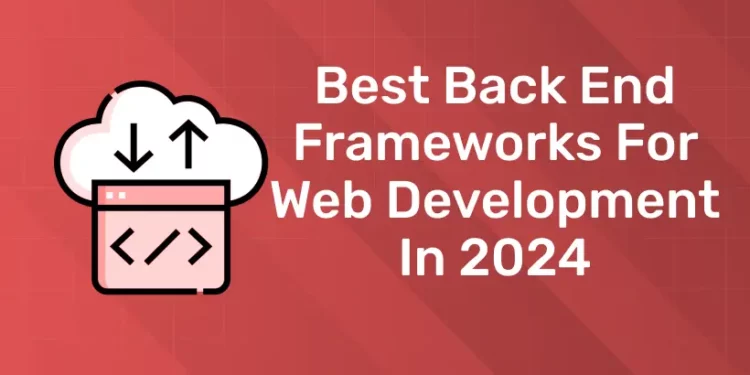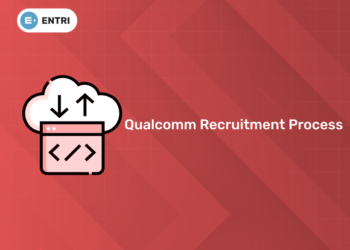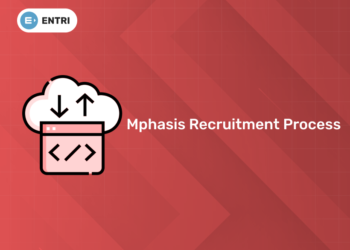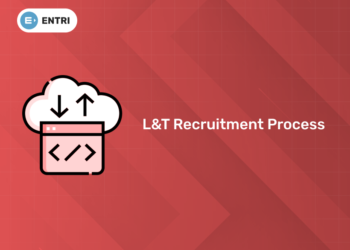Table of Contents
Backend frameworks are crucial for website development, providing resources and assistance for routine operations like routing, database administration, and server administration. They allow developers to focus on business logic, expediting the development process and resulting in high-quality products. Every web developer is aware of how crucial it is to select the right backend framework for a project to ensure its success. It is essential to choose a top backend framework that your present requirements and can adjust to future developments in the ever changing field of technology. In this Guide we are providing some best back end frame works for web development.
Learn to code from industry experts! Enroll here
What Are Backend Frameworks?
A server-side framework, often known as a backend framework, is a set of modules and tools used in the architecture development of websites. It can decide how well your project turns out in the end and has a significant impact on a web app’s performance. Developers duties are made easier and simpler with the aid of backend frameworks. These frameworks mostly concentrate on compiled languages like C# or scripting languages like Ruby or JavaScript. The finest backend framework helps developers get started more quickly by removing the requirement to construct and set up everything from scratch.
Advantages Of using Backend Frameworks
- Economical
- Efficiency and Expandability
- Accelerated Development Schedule
- Security
- Time Conserving
Best Backend Frameworks for Web Development
1: Which of the following is a JavaScript framework/library?
React
React is known as React JS or React. Js in the industry. It is an open-source JavaScript interface library that makes work easier while producing original UI elements. Facebook and other major corporations support the web development framework. It is advantageous to use as a foundation for single-page applications when developing apps for mobile devices.
Also Read : Prerequisites For Learning React
Django
Django is an open-source framework, first released in 2005, focusing on fast development and clear design. It’s built on Python, allowing developers to focus on app creation without having to master structured query languages like SQL or NO-SQL. Django simplifies code building and reuse in multiple applications. Django’s enhanced performance ensures that your web application remains safe and secure.
Related : What is Python Django? Benefits and Uses
ASP.NET
Microsoft’s ASP.NET software framework, known as Dot Net, offers a versatile platform for developing web, mobile, cloud computing, IoT, and games. It enables rapid desktop and web application development, making it suitable for companies seeking desktop software, cloud infrastructure support, and web-based services.
Ruby On Rails
Ruby on Rails is a free, open-source framework for developing web applications using Ruby programming language. It is installed using the operating system’s command line interface and provides pre-made solutions for common tasks like form construction. Ruby is used for server-side web application development, alongside HTML, CSS, and JavaScript.
Laravel
Laravel, a popular PHP framework, has over 1,14,640 live websites. Its model-view-controller architecture and clean syntax make it an elegant, straightforward web development tool. Laravel simplifies basic tasks like routing, authentication, sessions, and caching, making software development innovative and enjoyable. It seems that Laravel has a bright future because of its perfect, straightforward syntax, which can be leveraged to develop online apps with great performance.
Golang
Similar to C, Google created the efficient programming language Golang in 2007. Renowned users including Twitch, Riot Games, Dropbox, and Google use this robust backend technology and general-purpose language. Netflix and Uber also utilize it to build multilingual microservices. As a specialized language meant for detailed, large-scale tasks, Golang is the perfect backend technology for difficult projects involving massive volumes of data.
Enroll in our certificate program in Full Stack Web Development
Spring
Spring is an open-source Java application framework known for its modularity, dependency injection, aspect-oriented programming, resilience, extensibility, and simplicity of integration. It supports the IoC principle, promotes modularization, and offers flexible configuration options via Java-based configuration, XML, and Java annotations. Spring’s Aspect-Oriented Programming (AOP) helps backend developers divide cross-cutting issues like logging, security, and transaction management from main business logic, resulting in cleaner, more modular code quality.
NestJS
A scalable, dependable, and effective Node.js framework for developing server-side apps is called NestJS. It uses the modular architectural paradigm made popular by Angular and makes use of TypeScript.
Flask
Flask is a Python-based backend web framework that enables developers to interact with HTTP requests and answers. Its microservices architecture provides greater flexibility and control. Flask offers routing, templating, HTTP requests and answers handling, sessions, and cookie management. Its Jinja2 templating engine enables dynamic HTML template creation.
Express.JS
Express.js is a lightweight, adaptable Node.js web application framework with features for server-side apps and RESTful APIs. It allows easy integration of third-party plugins, templating engines, middleware, and authentication modules.
 Start Coding Today! Enroll Now with Easy EMI Options.
Start Coding Today! Enroll Now with Easy EMI Options. 

Get Hired as a Full-Stack Developer: Master the Skills Employers Are Looking For!
Start Learning With EMI Payment OptionsKey Points For Choosing Best Backend Frameworks
Many considerations must be made while choosing a backend framework for your project. To make an informed choice that properly fits the particular needs and long-term objectives of your project, it is imperative that you carefully consider each of these elements.
- The project’s objectives and scope
- Language used for programming
- Both scalability and performance
- Expense and authorization
- Versatility and Broadness
- Safety
Power up your career with Entri Elevate – Full Stack Development Course!
Conclusion
For online applications to be scalable and feature-rich, backend frameworks must be used. There has never been a more expansive and diverse backend framework market. There are a lot of factors to consider while selecting a compatible framework for your application, especially in light of the release of newer tools and frameworks.
Related Articles
 Start Coding Today! Enroll Now with Easy EMI Options.
Start Coding Today! Enroll Now with Easy EMI Options. 

Get Hired as a Full-Stack Developer: Master the Skills Employers Are Looking For!
Start Learning With EMI Payment OptionsFrequently Asked Questions
Which backend framework is mostly used?
Laravel and Django are the most utilized and exclusive backend frameworks. Some other most leveraged backend frameworks include Flask, ExpressJS, Ruby on Rails, Spring, and NestJS.
What is the easiest backend framework?
The easiest and most approachable backend framework is Django. It is built on Python and has an MVC architectural pattern. It is suitable for developing feature-rich websites that are database-driven.
Is Python used for the backend?
Python can be used for both backend and frontend development. Its easily approachable syntax and widespread server-side enablement make Python ideal for backend development.
Is React frontend or backend?
React.Js is a frontend programming language that uses client-side programming to build aspects of the website that users will see and interact with. It is an open-source framework based on JavaScript, maintained by Meta, and popular for its virtual DOM.










